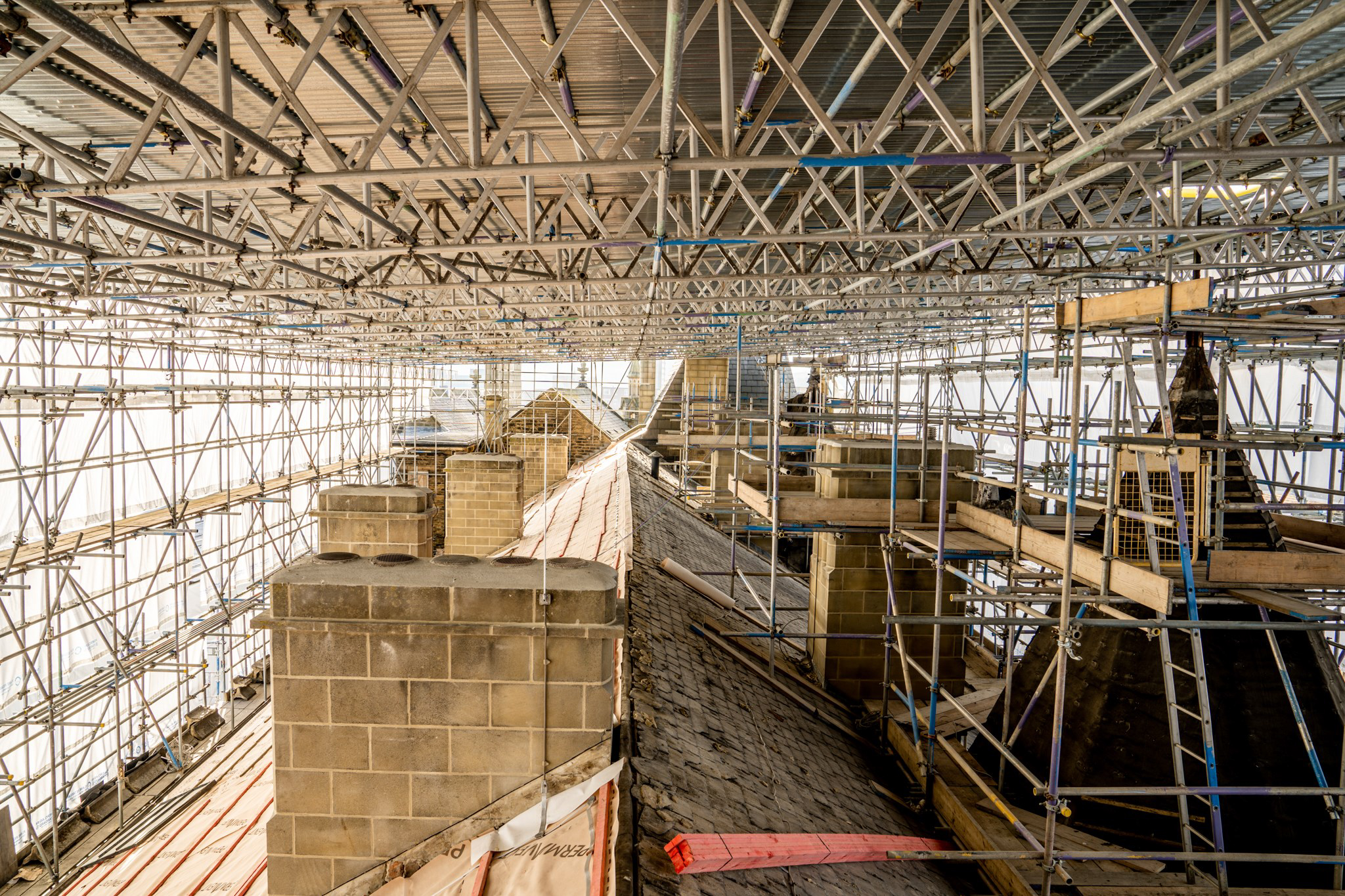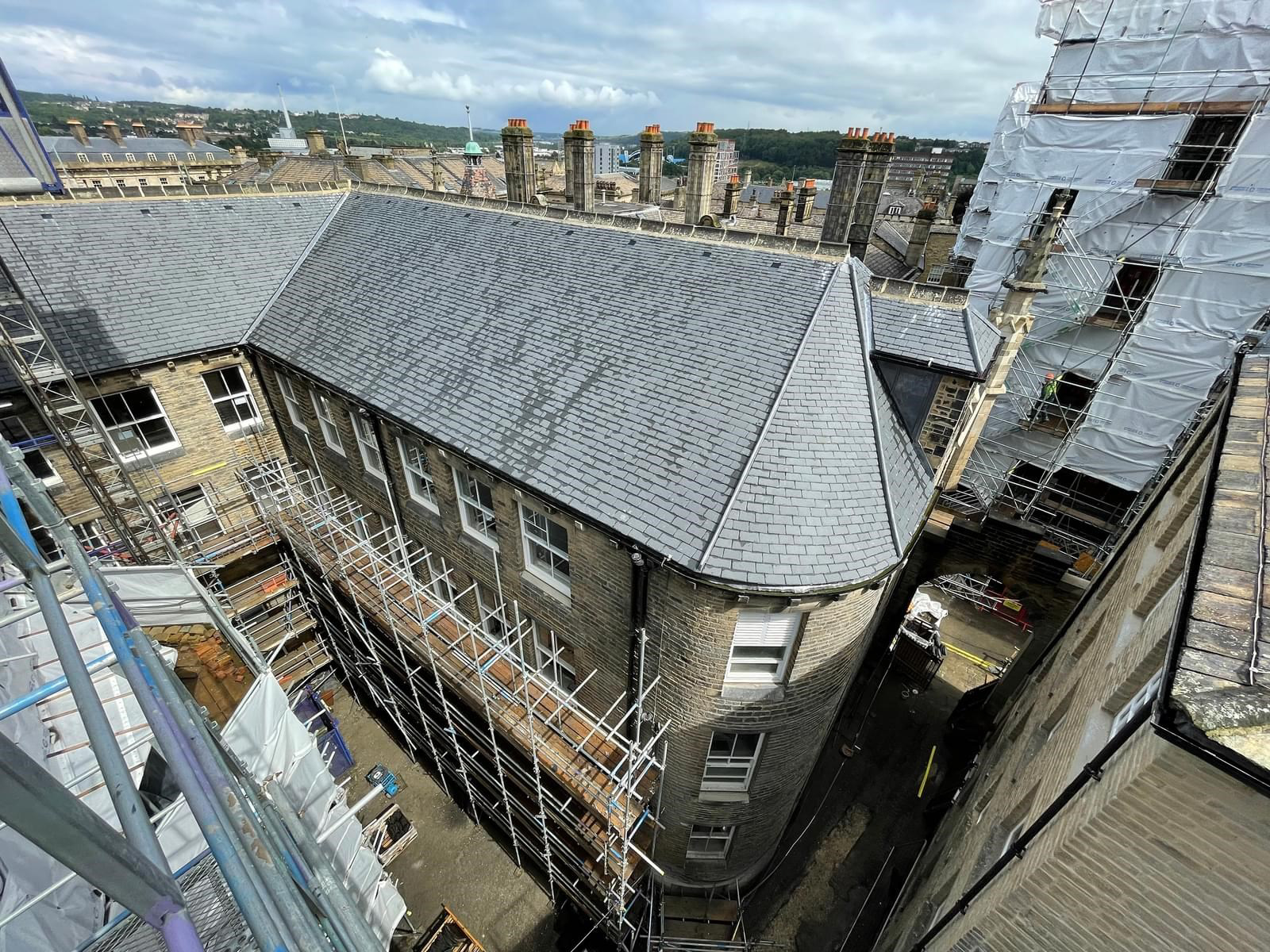THE ESTATES BUILDING & BYRAM ARCADE, HUDDERSFIELD
CONSERVATION WORKS

LOCATION

SECTOR
Conservation
CLIENT

ARCHITECT

PROJECT VALUE
£5m

CONTRACT
Traditional

PERIOD

CONTRACT PERIOD
68 Weeks
THE BRIEF
H.H. Smith were awarded the contract for repair and restoration works to the Grade II* Estates Building, located in Huddersfield Town Centre, after a competitive tender process. Works included a full refurbishment to the external envelope consisting of; window repairs, stone work repairs, complete new roof, lead work repair and replacement, new gutters and rainwater goods, and lightning protection. Designed by renowned Victorian architect William Henry Crossland, the 1874 building is one of the towns finest listed buildings. Originally used as the estates’ office for the locally important Ramsden family, the building (now owned by Kirklees Council) had remained empty in recent years, which led to deterioration and the need for these essential works to restore it to its former glory. The contract also included a similar package of works to Byram Arcade (located adjacent to the Estates Building), which is an important listed building in its own right. Here, the iconic roof lantern was also fully replaced.
KEY POINTS
To ensure the significant historical features were preserved, close consultation and collaboration was required between H.H. Smith, Heritage England and the Kirklees Council’s Conservation Officer. All works were carried out sensitively, with a robust approvals process instigated and maintained. Byram Arcade remained occupied during the works, so all scaffolding had to be carefully designed and installed to ensure building access was never compromised.
CHALLENGES
The location of both buildings in a busy town centre, with restricted vehicle access, was a major challenge. To enable the works to be undertaken, a road closure was necessary with an existing one way street adapted to divert traffic away from site. All deliveries were carefully planned and co-ordinated to ensure minimum disruption to the surrounding areas, and as material storage space was limited ‘just in time’ delivery principles were adopted. Waste was strictly controlled to ensure all surrounding roads and pavements were kept clear at all times.




